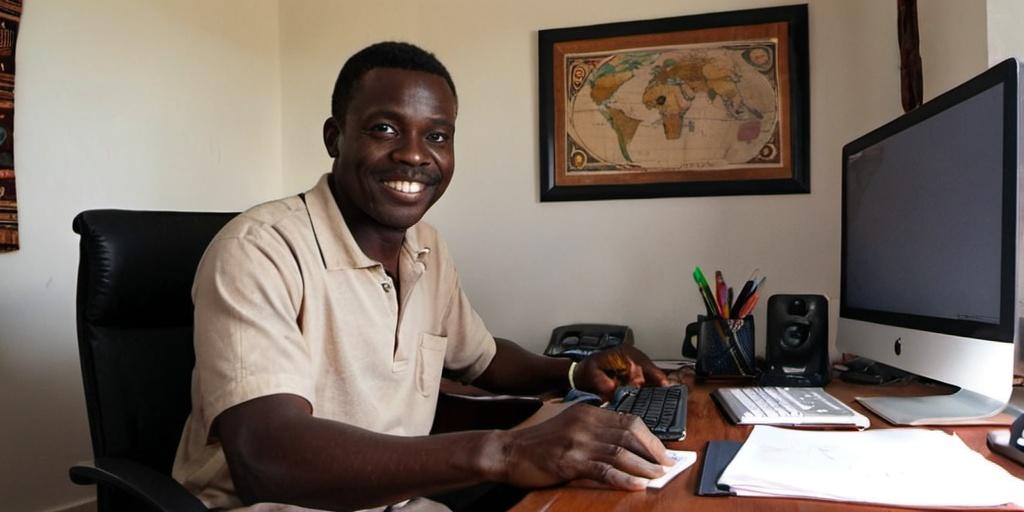What “broker” means across the continent
Across Africa the word broker covers very different businesses. On one side you have licensed stockbrokers that route orders to domestic exchanges and handle corporate actions for long-only investors. On another, fixed income dealers place clients into treasury bills and government bonds. Add global forex and CFD firms serving residents from abroad, plus a new wave of digital platforms that sit on top of local custodians, and you get a crowded scene that rewards clear intent. Decide first whether you want local ownership with dividends and voting, short term trading in global markets with leverage, or a split approach that keeps each goal in its own account. The right fit is less about a logo and more about the instrument list, the legal entity on your statement, and how reliably cash moves in both directions.

Licensing, oversight, and why the entity name matters
If you buy domestic equities and bonds you are dealing with firms authorised by national regulators and bound by exchange rules. You open an account with KYC, your shares sit with a central depository through a custodian, and corporate actions flow through registrars. Complaints have a defined path. For offshore forex and CFD accounts the protection level depends on the jurisdiction where the broker is licensed and the exact entity you sign with. Many groups run several entities with different leverage caps, disclosure rules, and client money protections. Before funding, read the client agreement and match the company name on the paperwork to the one that will hold your funds. If support cannot state margin call levels, stop-out logic, and withdrawal timing in plain words, treat that as your signal to pass.
Types of brokers and what they actually offer
Traditional stockbrokers focus on local listings, rights issues, exchange traded funds, and access to government paper via their fixed income desk. Fees come as a simple percentage with small minimums, which can make tiny tickets feel pricey. Execution ranges from dealer assisted phones and emails to web portals with basic order routing, while active clients may get better market depth and faster confirmations. Global forex and CFD brokers offer spot FX, metals, energy contracts, index CFDs, and sometimes single stock CFDs. Those products are margined, so stops, position sizing, and swap costs decide your fate more than any headline spread. A growing set of app-first platforms bridges the gap by offering fractional shares in offshore markets through omnibus custody; the convenience is real, but you should still read how assets are held and what happens in a corporate event.
Regulation snapshots by region
Southern Africa is anchored by South Africa, where the FSCA keeps a closer eye on retail marketing and client money rules. That makes it easier to find firms with segregated accounts, clearer disclosure, and local support hours that actually match the trading day. East Africa runs on strong mobile payments and a tidy licensing regime in Kenya, where the CMA registers online forex firms and pushes for better onboarding checks. West Africa is mixed. Nigeria’s markets are large and active, but bank and card rails can tighten or loosen, which nudges traders to maintain more than one funding route. Francophone West Africa brings the CFA peg into the picture; stability helps with funding yet many active traders still use offshore providers for product breadth. North Africa looks toward Europe for liquidity while working within local currency rules; residents often combine a domestic broker for long term holds with an international account for active trading. None of this changes the basics: read the paperwork, confirm the entity, test the rails.
Account opening, KYC, and custody
Expect identity documents, proof of address, tax IDs where applicable, and bank details for payouts. Domestic equity accounts link to a central depository number so you can track holdings even if you change brokers. For offshore accounts, custody is internal to the firm or its bank; you rely on client money segregation and the regulator’s rules. Ask where funds are held, which bank acts as custodian, and how reconciliations are performed. A short, boring call with operations is worth more than a glossy brochure.
Platforms, data, and tools that get used
Local brokers provide portals to place orders, see fills, download statements, and handle dividend elections. Research varies by firm, so many investors grab primary sources—results releases, notices, auction calendars—and keep personal models. Offshore trading leans on MT4, MT5, cTrader, and web or mobile platforms with watchlists, alerts, and basic depth. Choose tools that run smoothly on your connection, keep chart templates light so they load fast on a phone, and set alerts at price not at every indicator twitch. If power cuts are part of your week, server-side stops and pending orders are not optional.
Fees and the costs that hide in plain sight
Domestic equity trades include broker commission plus exchange and regulatory fees. Read the schedule and ask for an all-in example on a typical ticket size. Bond desks earn through quoted yields and explicit handling charges; ask for a clear comparison to secondary market prints. In margin accounts, spreads and per-lot commissions are the visible bits while swaps, dividend adjustments on indices, and slippage during busy minutes write the real bill. Request a sample statement that shows every line, then run a small live test before you scale. The cheapest headline spread can still be the most expensive account if fills slip when markets heat up.
Funding, withdrawals, and keeping cash movement boring
Cards, local bank transfers, and mobile money fuel small deposits; bank wires handle larger sums. Rails differ by country and can shift, so keep at least two working deposit options and a tested withdrawal route. For offshore firms, confirm whether withdrawals must return via the original method and whether admin fees apply. Do a small withdrawal in week one to learn the true timing and any friction. Split balances across two brokers if your capital allows. That way a slow gateway or an outage does not trap your whole month.
Execution quality, liquidity, and time-of-day habits
If you trade local equities, thin names demand limit orders and patience over several sessions. Watch closing auctions; they often print cleaner prices for size. For forex and CFDs, liquidity clusters around London hours and the London–New York overlap, which aligns well with most African time zones. Spreads widen near major news and around daily roll; new entries during those windows are a choice, not a necessity. A plan that respects session behavior tends to outlive one that fights it.
Research, records, and the paperwork you will thank yourself for keeping
Keep a folder with account agreements, fee schedules, and emails where the broker confirms withdrawal timing and margin rules. Export monthly statements. For domestic holdings, track dividend notices, bonus issues, and rights circulars; registrars can be slow if paperwork is messy. For active trading, a simple log that records symbol, size, entry, exit, and reason helps you spot which hours and setups pay and which quietly drain. Clean records make tax time and bank conversations shorter and less dramatic.
Service quality and what to test before you go big
Call support during busy hours and see how long it takes to reach someone who can answer a practical question. Send an email with a specific query about fees or custody and judge the clarity of the reply. Try a platform during a volatile hour and watch for freezes or rejected orders. Place a small withdrawal and time it. None of this is exciting, yet it saves headaches later.
Risk controls that survive a bad week
On the investing side, spread exposure by sector and size positions so one headline does not swamp your book. Use limit orders in thin stocks and resist chasing gaps. On the trading side, fix risk per idea, place stops where the thesis fails, and keep correlated exposure modest. A daily loss cap and a weekly review stop losing streaks from spiraling. Hold cash for chances rather than becoming a forced seller at weak prices or a forced buyer at hot ones.
Country notes that nudge small choices
South Africa offers deeper local infrastructure, more research coverage, and steadier support queues, which suits investors who want a local core. Nigeria brings scale and energy, with payment rails that can shift; redundancy in funding routes is smart. Kenya’s mobile money rails make small, frequent deposits and withdrawals painless, an advantage for traders who scale gradually. North African markets line up well with European hours and often blend domestic holdings with offshore trading. Francophone West Africa benefits from the CFA peg for funding stability but may offer fewer local platforms for active products. Adjust hours, rails, and position sizes to fit, while keeping the same playbook on paperwork and risk.
A straightforward broker selection workflow
Write your goal in one line. Shortlist firms that truly serve that goal. Match the entity name on your agreement to the one on your statements. Ask for fee illustrations and a sample statement. Open a small account. Place a few test orders in normal and busy conditions. Run a withdrawal. Scale only after the dry run feels boring. The right broker fades into the background so you can spend attention on price, value, and timing instead of chasing support tickets.
Final notes
Africa offers enough broker choice to suit patient investors and active traders alike, but the edge sits in dull habits: read the contract, confirm custody, test the rails, keep records, and size positions so a rough patch is an annoyance, not a disaster. Do that, and the platform becomes a reliable tool rather than a variable you need to babysit.
